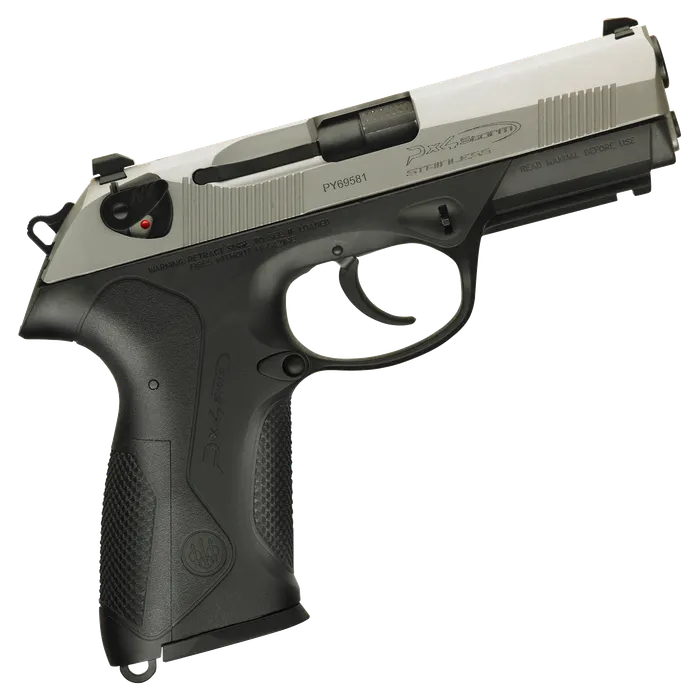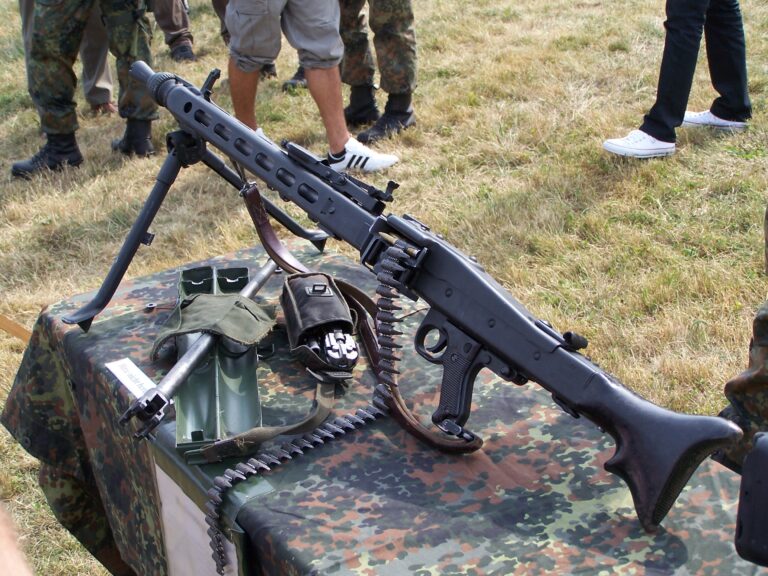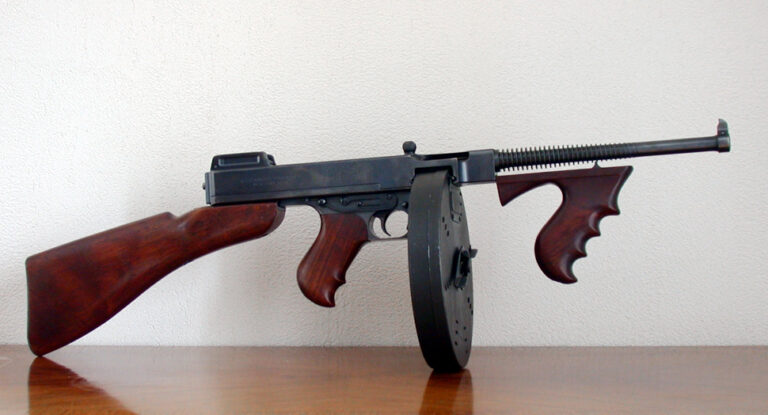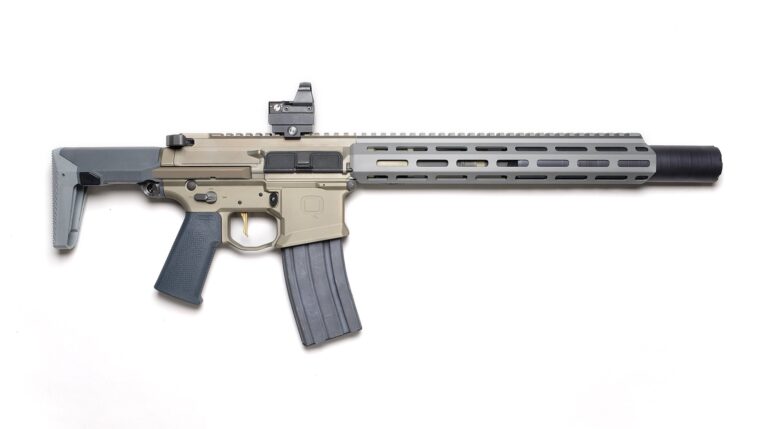Introduction
TheAK-12 is the latest evolution in the legendary line of Kalashnikov assault rifles, designed to equip the Russian armed forces with a weapon combining robustness, precision and modularity. Developed by Kalashnikov Concernthe AK-12 represents a technological leap forward designed to meet the demands of modern combat, while retaining the fundamental values of the series: simplicity, reliability and low production costs. As the Russian army’s standard assault weapon since 2018, the AK-12 has been designed to replace aging AK-74 models, offering Russian soldiers a more versatile, high-performance weapon solution.
In this article, we’ll explore the history of the AK-12, its technical features, innovations, field performance and tactical advantages over other new-generation assault rifles. The AK-12 is a genuine revolution in the Kalashnikov family, incorporating technologies and features tailored to the demands of contemporary missions.
Origin and development of the AK-12
The AK-12 was developed in response to the growing need for an assault rifle capable of adapting to modern combat standards. In the 2010s, the Russian Ministry of Defense launched the Ratnikprogram, aimed at modernizing the equipment used by Russian soldiers. The AK-12 was developed to meet the program’s criteria, incorporating ergonomic improvements, increased modularity and customizability to suit different theaters of operation. The initial AK-12 prototype underwent several revisions to meet military expectations in terms of handling, comfort and compatibility with tactical accessories.
Kalashnikov Concern has used modern materials such as polymer to reduce the weapon’s weight and offer greater resistance to harsh weather conditions. The introduction of Picatinny rails on the top and sides of the weapon makes it easy to mount accessories, an innovation that brings the AK-12 closer to Western standards in terms of modularity.
Advanced Design and Ergonomics
The AK-12 retains the mechanical simplicity and robustness for which Kalashnikovs are renowned, while incorporating substantial improvements. The stock is adjustable in length and foldable, enabling soldiers to adapt the weapon’s configuration to their needs and carry it easily in confined spaces. What’s more, the grip has been redesigned to provide an ergonomic hold, optimizing stability during firing.
The AK-12’s firing selector offers several modes: semi-automatic firing, two-shot burst and fully automatic firing. The two-shot burst mode is particularly interesting for rapid engagement while conserving ammunition. This mode reduces recoil and ensures optimum precision, a significant advantage in close combat situations.
Improvements also include a new muzzle brake system, which significantly reduces recoil and barrel lift, making the weapon more controllable in continuous fire. This increased stability is essential for maintaining accuracy in prolonged bursts. The AK-12 is also equipped with a transparent magazine, enabling soldiers to quickly check the remaining ammunition level, a practical feature in combat situations.
Technical specifications
–Caliber: 5.45 × 39 mm (also available in 7.62 × 39 mm for specific configurations)
–Operating system: Direct gas, rotary lock
–Barrel length: 415 mm, designed for a stable, precise firing trajectory
–Firing rate: Approx. 700 shots per minute
–Effective range: 500 metres
Magazine capacity: Standard 30-cartridge magazine, with 60-cartridge magazine options (drum type)
–Weight: 3.5 kg empty
–Material: Steel, polymer, aluminum for enhanced durability
The AK-12 is primarily chambered in 5.45 × 39 mm, but can also be configured in 7.62 × 39 mm for missions requiring increased penetration power. Its rate of fire of 700 rounds per minute makes it a versatile rifle, capable of meeting both suppressive and precision fire requirements.
Combat performance and stability
The AK-12 is designed to offer greater accuracy and maneuverability than previous models. Thanks to its advanced muzzle brake and improved recoil system, the AK-12 minimizes muzzle rise, enabling the shooter to remain aligned with the target even during prolonged fire. This reduction in recoil also improves shooting comfort, reducing shooter fatigue during prolonged engagements.
The modular sighting system, compatible with both mechanical and optical sights, makes it easy to adapt the AK-12 to the requirements of each mission. Picatinny rails offer great flexibility for mounting tactical accessories, making the AK-12 adaptable to a variety of combat situations, from reconnaissance missions to urban combat and open-country engagements.
Tactical advantages of the AK-12
1 Superior Modularity: Thanks to Picatinny rails and an architecture designed for customization, the AK-12 can be fitted with various accessories such as optical sights, tactical lights, front grips and night vision systems.
2. Reduced recoil: The improved muzzle brake and two-shot burst make the AK-12 very stable, even when firing in bursts, enabling greater control and precision in close combat.
3. Versatility in Firing Modes: The presence of three firing modes, including the two-shot burst, offers unprecedented flexibility, allowing you to save ammunition and adapt to a variety of tactical situations.
4. Adjustable and Folding Stock: This feature allows soldiers to adjust the length of the weapon to suit their needs, optimizing maneuverability in different usage scenarios.
5. Transparent magazine: The ability to visually check ammunition levels is an important strategic advantage, allowing soldiers to stay informed of their fire reserve while in action.
Comparison with other new-generation assault rifles
–M4 Carbine: While the M4 is appreciated for its lightness and precision, the AK-12 offers greater reliability in tough environments, with less maintenance and greater robustness.
–FN SCAR: The SCAR is renowned for its modularity and caliber options, but the AK-12 retains the advantage in terms of simplicity of construction and cost, making maintenance more accessible in the field.
–Heckler & Koch HK416: Used by many special forces, the HK416 is a precise assault rifle, but the AK-12 is more affordable and retains the advantage of the Kalashnikov series’ proven reliability in tough combat conditions.
Impact of the AK-12 and its adoption by the Armed Forces
Since its official adoption, the AK-12 has become the standard weapon of Russian forces, gradually replacing the aging AK-74. Its relatively low production cost, ease of maintenance and reliability have made it an ideal solution for modernizing Russia’s military arsenal. The AK-12 is also appreciated by Russian special forces for its maneuverability and ability to adapt to different types of mission, thanks to its modularity.
The rifle has also attracted interest from international markets, in particular from countries with historical ties to Russia and a desire to modernize their military equipment while maintaining compatibility with Kalashnikov-series ammunition.
Conclusion
The AK-12 embodies the modernization of the Kalashnikov series, combining the brand’s legendary reliability with innovations tailored to the needs of modern combat. Its modularity, maneuverability and customization options make the AK-12 an ideal assault rifle for modern soldiers, capable of operating in a variety of tactical environments. In
Positioned as a natural successor to the AK-74, the AK-12 meets the needs of today’s armed forces, while remaining true to the Kalashnikov heritage: a robust, simple and effective weapon.









